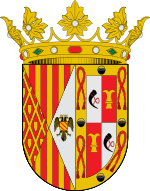
The Spanish nobility are people who possess a title of nobility confirmed by the Spanish Ministry of the Presidency, Justice and Relations with the Cortes, as well as those individuals appointed to one of Spain's three highest orders of knighthood: the Order of the Golden Fleece, the Order of Charles III and the Order of Isabella the Catholic. Some members of the Spanish nobility possess various titles that may be inherited or not, but the creation and recognition of titles is legally the prerogative of the monarchy of Spain.
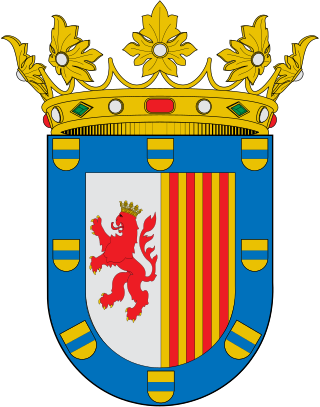
Duke of Arcos is an hereditary title in the Peerage of Spain, granted by Isabella I in 1493 to Rodrigo Ponce de León, then 4th Count of Arcos. The dukedom is among the first 25 titles which reached the rank of Grandee of Spain 1st Class, in 1520. Nowadays however, all Grandees are of the same class.

Duke of Plasencia is a hereditary title in the Spanish nobility. It was granted on 1476 by Queen Isabella I and King Ferdinand V of Castile, The Catholic Monarchs, to Álvaro de Zúñiga y Guzmán, 2nd count of Plasencia and also 1st Duke of Béjar, 1st Duke of Arévalo and 1st Count of Bañares, in acknowledgment for his loyalty during the War of Castilian Succession.

Gonzalo II Fernández de Córdoba, third Duke of Sessa, was the grandson of a Viceroy of Naples, Gonzalo Fernández de Córdoba, first duke of Sessa, the son of the first duke's daughter, Elvira Fernández de Córdoba y Manrique, and of her husband, Luis Fernández de Córdoba. Gonzalo II, holder of several dukedoms and many other lesser titles, Spanish and Italian, was Captain General of the Spanish Troops in Italy, Great Admiral of the Kingdom of Naples, and a member of the Spanish king Royal Council for Italy and the Royal War Council.
Luis Hurtado de Mendoza y Pacheco was a Spanish nobleman. He was the 3rd Count of Tendilla and the 2nd Marquis of Mondéjar.

Duke of the Infantado is a Spanish peerage title that was granted to Diego Hurtado de Mendoza y Figueroa, son of Íñigo López de Mendoza, 1st Marquis of Santillana, by the Catholic Monarchs, Ferdinand II of Aragon and Isabella I of Castile, on 22 July 1475.

The House of Zúñiga is a Spanish noble lineage who took their name from their domain. Various members of the family were distinguished in the service of the Spanish crown in Europe and the Americas as viceroys, governors, military, diplomats, writers and members of religious orders. Charles I of Spain in 1530 named two members of the family, the Duke of Béjar and Plasencia and the Count of Miranda del Castañar, among his Immemorial Grandees, while eight members of the family were inducted into the Order of the Golden Fleece.

Pedro de Alcántara Téllez-Girón y Beaufort Spontin, 11th Duke of Osuna, GE, was a Spanish peer, head of the House of Osuna. He was one of the most important peers of his time, and was thirteen times a duke, twelve a marquess, thirteen a count and once a viscount.

Duke of Béjar is a hereditary title in the Peerage of Spain, accompanied by the dignity of Grandee and granted in 1485 by the Catholic Monarchs to Álvaro de Zúñiga, 1st Duke of Plasencia and chief justice of Castile.

Duke of Benavente is a hereditary title in the Peerage of Spain, accompanied by the dignity of Grandee and granted in 1473 by Henry IV to Rodrigo Alonso Pimentel, 4th Count of Benavente.
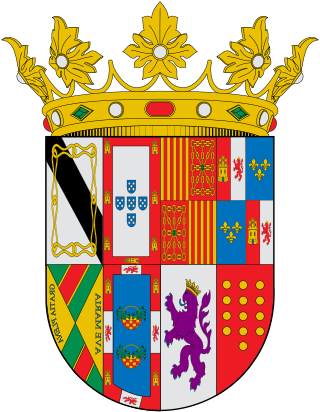
Duke of Arión is an hereditary title in the Peerage of Spain accompanied by the dignity of Grandee, granted in 1725 by Philip V to Baltasar de Zúñiga, viceroy of New Spain.

Marquess of Priego is a hereditary noble title of the Kingdom of Spain that Ferdinand the Catholic granted on 9 December 1501 to Pedro Fernández de Córdoba y Pacheco, 7th Lord of Aguilar in Córdoba, of the house of Córdoba. It is one of the most important noble titles in Spain, and was made a first class grandee in 1520 by Charles V, Holy Roman Emperor.

Marquess of Camarasa is a hereditary title in the Peerage of Spain accompanied by the dignity of Grandee, granted in 1543 by Charles II to Diego de los Cobos y Mendoza as a gift of his marriage to Francisca Luisa de Luna y Mendoza, who was Lady of Camarasa.
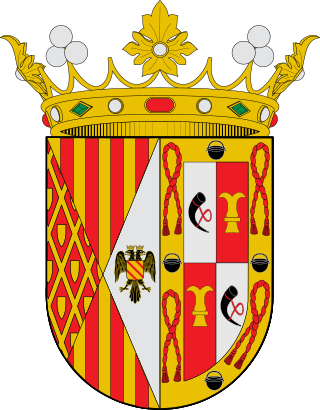
Marquess of Terranova, is a title of Spanish nobility. It was granted along with the Dukedom of Mandas to Pedro Maza de Lizana on 23 December 1614 by king Philip III.
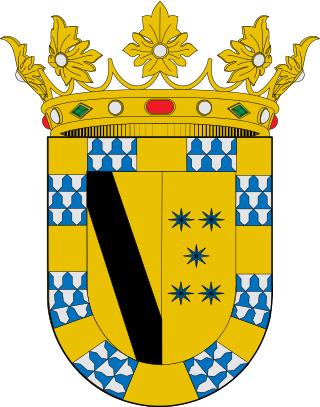
Duke of Lerma is a hereditary title in the Peerage of Spain accompanied by the dignity of Grandee, granted in 1599 by Philip III to Francisco Gómez de Sandoval, 4th Count of Lerma and his royal favourite.

José Ambrosio Brunetti y Gayeso, 15th Duke of Arcos GE was a Spanish aristocrat and diplomat who served as Minister Plenipotentiary in Bolivia, Uruguay, Chile, Mexico, the United States and Belgium, and ambassador to Italy and Russia. He was also an important benefactor of the Prado Museum, to which he made a posthumous bequest of ten paintings, including Young Man with a Feather Hat, by Pieter Hermansz Verelst.
